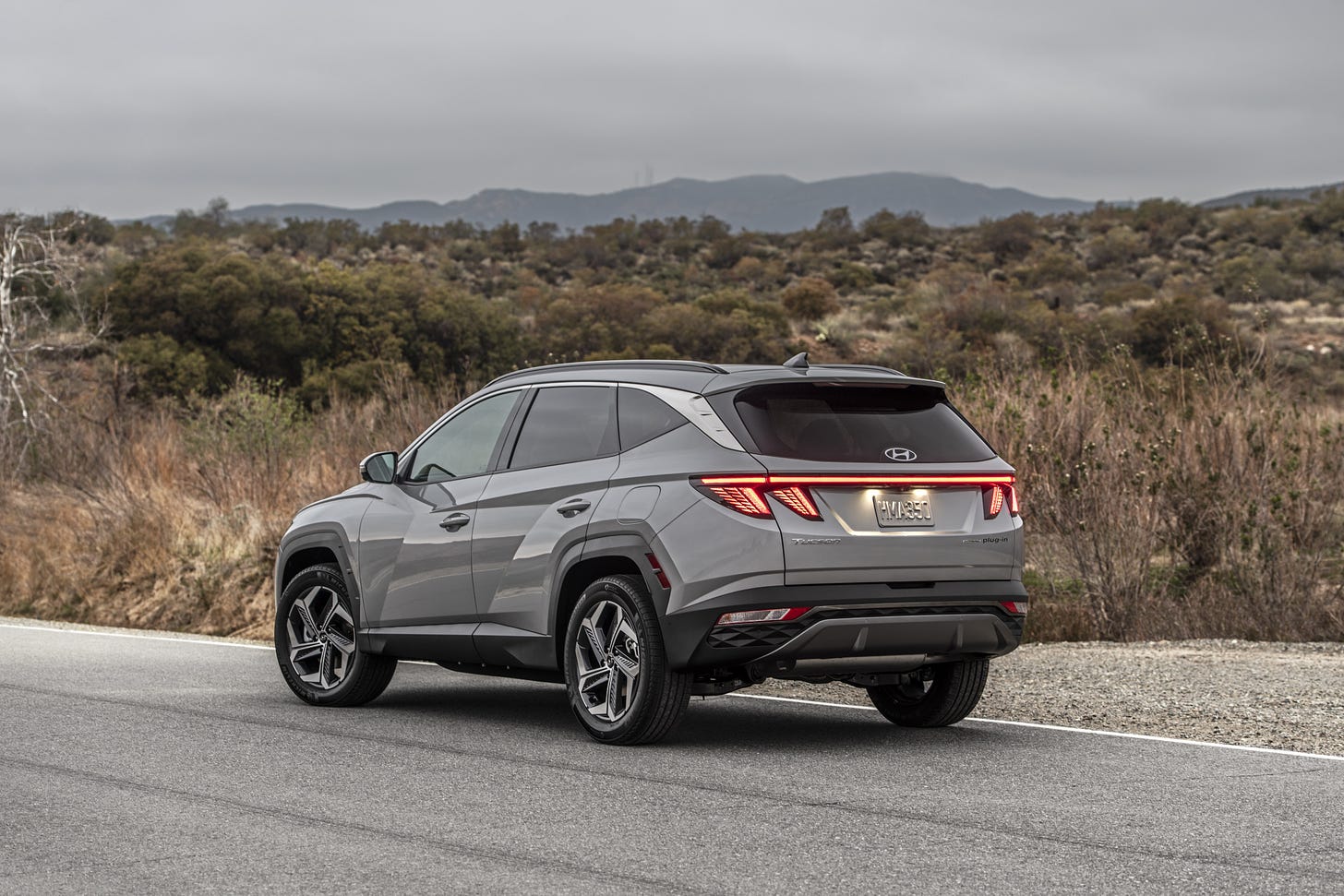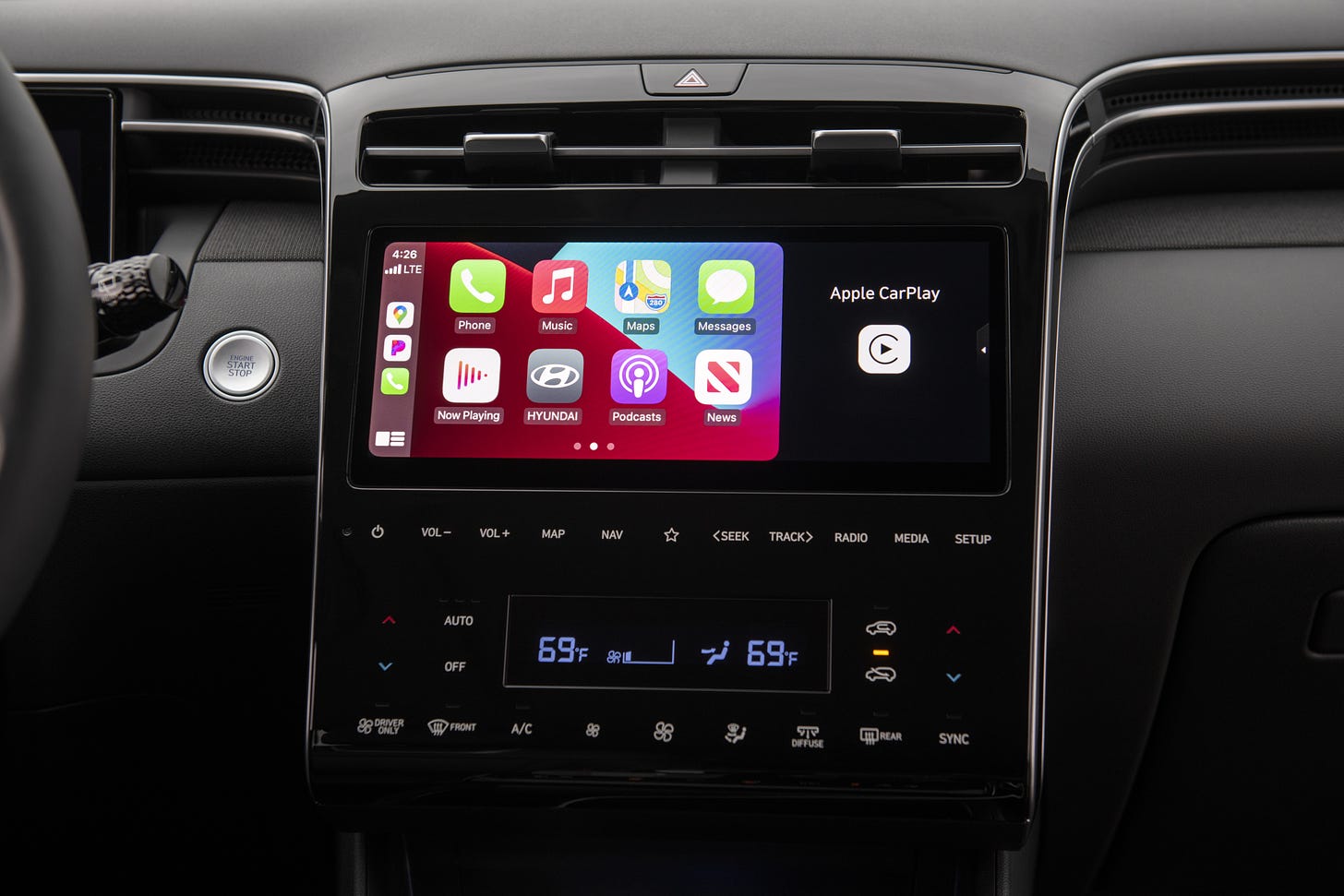SAN DIEGO — I wish every car were available as a plug-in hybrid.
Our choices remain limited, though, which is a shame because they’re perfect for so many people. A plug-in hybrid or PHEV is a stepping stone to fully electric cars and trucks. I’ve reviewed a number of PHEVs in recent months, including the Range Rover Sport PHEV, the Toyota RAV4 Prime, and the Jeep Grand Cherokee 4xe — and I loved them all.
For the automaker, the brief is simple: build an electric car with enough range to cover most everyday driving, with a gasoline engine thrown in to get you around when you need to go a bit further. Range anxiety is genuine and legitimate since public charging is still messy (unless you have a Tesla), and most people don’t drive more than 40 miles a day.
The Hyundai Tucson PHEV is the standard Tucson, which I drove last year and liked, plus a 13.8 kWh battery good for 33 miles of EPA-estimated electric range. After that, the 1.6-liter turbocharged four-cylinder hybrid takes over and delivers a respectable 35 mpg combined city and highway.

To illustrate the financial benefits, at North Carolina electricity prices of around $0.12 per kWh, those 33 electric miles will be priced similarly to gas at around $1.65 per gallon.
It will take a long time to break even, as the Tucson Limited PHEV I drove priced out to $43,970 fully loaded — some $10,000 more than a standard Tucson. This wasn’t as bad a hit when the Tucson PHEV was eligible for a $7,500 federal tax credit. But, as the vehicle is currently built in Ulsan, Korea, it’s ineligible under the new Inflation Reduction Act EV tax credit scheme, where vehicles must be assembled in the United States to qualify.
For the price, though, you get a remarkably well-equipped SUV and for quite a bit less than its main competition. The Toyota RAV4 Prime quickly closes in on $50,000 when fully loaded. However, the Toyota gets an impressive 42 miles of electric range from its 18.1 kWh battery, almost 30 percent more range than the Tucson does (and its gasoline fuel economy is slightly better, too, at 38 mpg).

At this point, however, it’s tricky to say that the RAV4 Prime or the Tucson PHEV is better than the other simply because they’re so hard to find. Both vehicles are nearly impossible to locate on dealer lots, so if you find one… that’s the one to buy.
That said, if I had to choose, I’d give the edge to the Tucson PHEV because of its terrific interior and exterior design, its comprehensive tech stack, and its long list of luxury-esque features.
The 10-inch digital instrument cluster and 10-inch infotainment screen with wireless Apple CarPlay and Android Auto are excellent. My only major complaint is the annoying touch-sensitive up/down thermostat buttons to change the temperature settings. Can we just have a knob to spin instead of needing to jab a button repeatedly when we get cold?

It’s also worth calling out Hyundai’s outstanding Highway Drive Assist feature. It allows the driver to momentarily take their hands off the wheel while driving. The car uses forward-facing radar and cameras to determine the vehicle’s position between the lane lines and helps provide steering input. This is coming to more and more vehicles, but the Hyundai implementation is one of the best on the mainstream end of the market, making a stop-and-go commute significantly less painful.
Hyundai’s 10-year/100K-mile powertrain warranty covers the battery and hybrid system in addition to the engine and transmission components, while a 5-year/60K-mile bumper-to-bumper warranty is one of the best you can find anywhere. I drive a ton of vehicles and can tell you that this is not the Hyundai of old and that the company is making tremendous vehicles up and down the line — but that extended warranty is sure to deliver peace of mind to potential buyers skeptical about buying a Korean car.
It’s true that 20 or 25 years ago, Hyundai and Kia were making some truly dreadful cars, but that’s no longer the case. Both companies are making highly competitive vehicles worth considering in just about every vehicle segment.
I wish they offered (and built!) more plug-in hybrids, though. An EV around town and a regular gas vehicle for long drives is the perfect setup for most folks in 2022.


